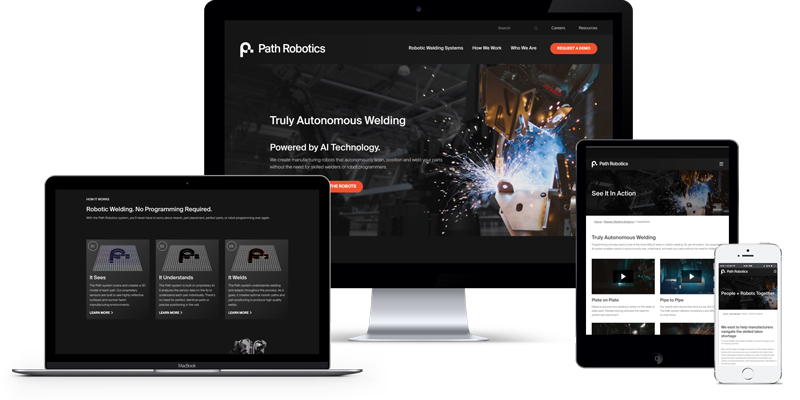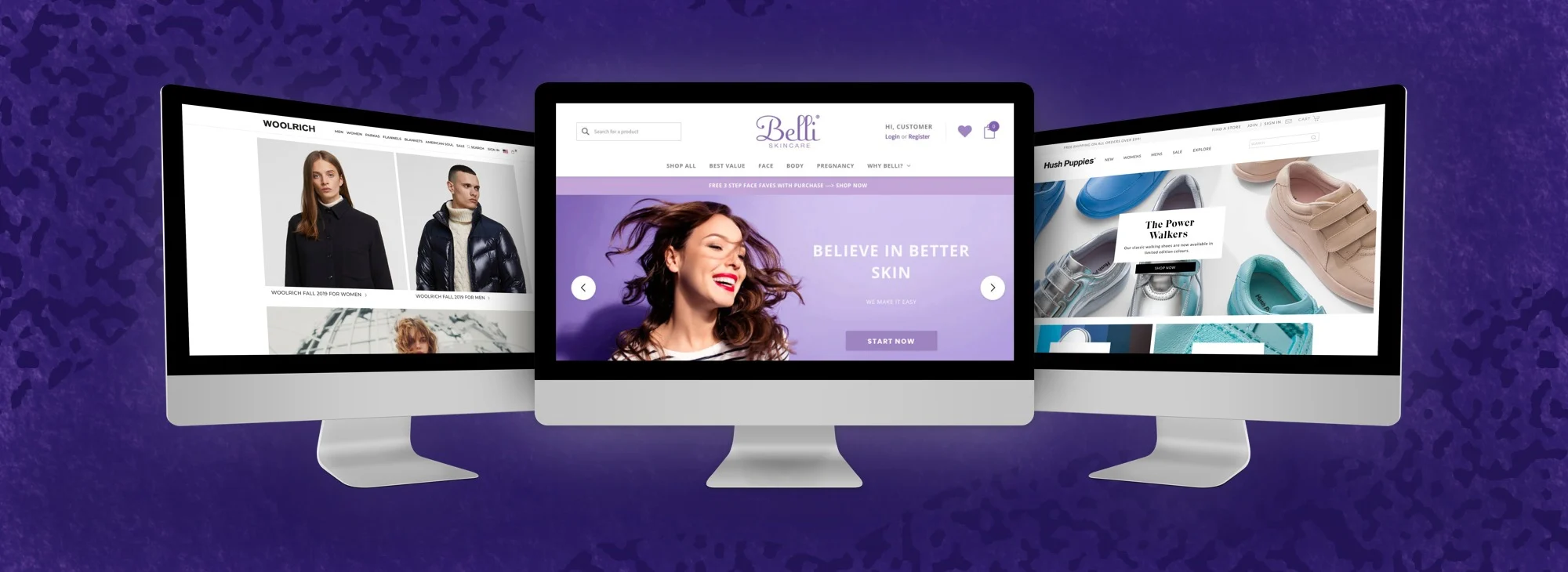Modern Web Site Style That Captures Focus and Converts
In an increasingly digital landscape, modern-day web site design has emerged as a crucial element in recording user focus and driving conversions. As we discover these vital elements, it comes to be clear that recognizing their interplay can substantially influence a website's performance and individual contentment.
Importance of Visual Power Structure
Visual power structure is a critical aspect in site layout, as it guides customers' attention and boosts their general experience. By strategically organizing web content, designers can route individuals to the most vital information initially, consequently enhancing involvement and enhancing usability.
Including a logical flow in web content plan is important; for circumstances, positioning the most essential info on top of a page promotes instant acknowledgment. Consistent use of typography, such as differing font sizes and designs, assists develop a clear web content framework. This company not just help in navigating yet likewise builds count on, as individuals feel extra comfy when they can easily find what they are trying to find.
Inevitably, a well-executed aesthetic power structure not just enhances aesthetic appeal but likewise substantially influences customer actions. By focusing on essential elements and guaranteeing a seamless experience, developers can effectively convert visitors right into consumers, strengthening the relevance of this fundamental layout concept in modern web site development.
Responsive Design for All Devices
Creating a seamless experience across various devices is important in today's digital landscape, where users gain access to internet sites from tablets, mobile phones, and desktops alike. Responsive design is a vital strategy that makes certain web sites adapt fluidly to different screen orientations, resolutions, and dimensions. By using versatile grids, images, and CSS media inquiries, designers can develop formats that maintain aesthetic integrity and capability, regardless of the tool being utilized.
The significance of receptive layout expands beyond aesthetic appeals; it directly affects customer interaction and conversion rates. An internet site that functions well on all devices encourages longer sees and reduces bounce rates, as customers are most likely to engage with web content that is simple to browse. Additionally, search engines, specifically Google, focus on mobile-friendly sites in their rankings, making receptive style an important part of seo (SEO)
Incorporating responsive layout not just boosts individual experience but additionally streamlines the advancement procedure. By developing a single site that works across tools, businesses can save time and sources compared to creating different mobile and desktop computer variations. Eventually, responsive layout is a fundamental technique for modern site style, making sure access and complete satisfaction for all customers, no matter their device.
Engaging Interactive Components
While a receptive design prepares for a functional site, incorporating engaging interactive elements is important for catching user focus and fostering much deeper links. Website Design. Interactive aspects, such as animations, tests, and clickable infographics, develop a much more dynamic user experience, urging visitors to spend even more time on the website
Incorporating interactive attributes can additionally lead individuals through complex info, making it less complicated to absorb material. For instance, interactive sliders can highlight item variants, while ingrained video clips can offer demos or testimonials that reverberate more than fixed pictures or message. Gamification strategies, like benefits for finishing tasks or involving with content, can improve user inspiration and retention.
Reliable use interactive elements not just enhances the individual experience but can additionally result in greater conversion rates. By making interactions satisfying and interesting, organizations can cultivate a sense of commitment and trust fund with their audience. It is important to balance interactivity with performance; overly complicated functions might impede website rate, adversely affecting individual contentment. Ultimately, integrating well-designed interactive elements can dramatically elevate a web site's efficiency, driving involvement and conversions in today's affordable electronic landscape.
Streamlined Navigating Practices
Efficient navigating is a keystone of any type of successful internet site, go to these guys as it directly influences customer experience and web content access. Streamlined navigation practices guarantee that users can easily find info, improving their interaction with the website. A well-structured navigating menu must be easy and intuitive, usually featuring a limited variety of key categories to avoid overwhelming site visitors.
To accomplish streamlined navigation, designers ought to prioritize a hierarchical structure that logically arranges material. Implementing breadcrumb routes can supply individuals with context about their existing location within the site, permitting seamless backtracking. Additionally, using drop-down menus can efficiently preserve space while still giving access to subcategories.
Responsive design is essential, as navigating ought to be useful throughout all tools (Website Design). Mobile users, specifically, benefit from touch-friendly food selections and collapsible areas that maintain use without compromising aesthetic appeals

Effective Call-to-Action Methods
A well-crafted call-to-action (CTA) is crucial for assisting users towards wanted end results on a web site, as it encourages them to involve with web content or purchase. To optimize their effectiveness, CTAs need to be clear, compelling, and strategically placed throughout the website.
First, make use of action-oriented language that interacts necessity or worth, such as "Start," "Sign up with Now," or "Insurance claim Your Discount rate." This language not only inspires customers but likewise sets clear assumptions about the next steps.
2nd, think about design components; CTAs need to stick out visually with contrasting shades, ample whitespace, and popular positioning. A switch that is very easy to see and click rises the possibility of individual communication.
In addition, personalizing CTAs based upon individual habits or demographics can significantly enhance interaction. Tailored messages resonate a lot more with customers, driving greater conversion prices.

Final Thought
To conclude, modern site style emphasizes the assimilation of visual pecking order, responsive designs, involving interactive components, streamlined navigating, and efficient call-to-action approaches. These elements collectively improve customer experience, ensuring that visitors remain engaged and inspired to discover web content better. By focusing on these layout concepts, organizations can considerably enhance individual retention and conversion rates, eventually causing better success in the digital landscape. The continual advancement of internet style highlights its essential duty in reliable on-line interaction and advertising.
In a progressively digital landscape, modern-day web site design has emerged as a crucial element in catching customer focus and driving conversions.Aesthetic power structure is a vital aspect in site style, as it overviews users' attention and boosts their total experience.The significance of responsive design expands beyond aesthetic why not find out more appeals; it straight impacts user engagement and conversion rates.Including receptive style not just enhances customer experience but also enhances the growth procedure. Inevitably, receptive layout is a fundamental method for contemporary web site layout, making certain access and satisfaction for check this site out all individuals, no matter of their gadget.